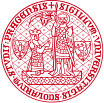Introduction to formal linguistics
- SIS code: NPFL006, link to SIS
- Fall term 2024/2025: Wednesday 10:40-12:10 in S11 - the course starts on 2 October 2024
- Lecturer: Mgr. Magda Ševčíková, Ph.D.
- 2/0 (exam)
-
Moodle: https://dl1.cuni.cz/enrol/index.php?id=4893
- please enroll in the course (using the link & SIS login and password) to access slides and additional materials
Description and objectives of the course
The course guides students through selected linguistic frameworks which have been designed for formal description of natural language. Focus is laid on syntactic issues.
Linguistic features (form vs meaning of the sentence, syntactic relations between the sentence items, role of the verb, referencing within the sentence, etc.) are discussed first and then analysed in both dependency- based and constituency-based frameworks.
Course completion requirements
1. Successful completion of 4 homework assignments (4 x 10 =) 0–40 points
2. Attendance and participation in the class 0–10 points
3. Final exam: an in-class test at the end of the term 0–50 points
max. 100 points
Grading
Excellent 80+ points
Very good 70–79 points
Good 60–69 points
Fail 0–59 points
/PhD students: 75 points required for Pass/
………………………………………………………………………………………………………
Course schedule
2 October 2024 - Intro & discussion
Intro: Description and objectives of the course, lecture topics, course completion requirements, grading
Discussion: Formal description of natural languages – what are we up to?
9 October 2024 - Lecture 1: Formal description of the language
Form vs. meaning and the notion of linguistic sign
Focus on syntax:
- Form vs meaning of the sentence
- Intermediate levels in the sentence description: surface-syntactic vs deep-syntactic representation
- Dependency vs. constituency
16 & 23 October 2024 - Lecture 2 & 3: Linguistic features to be discussed
Formalization of features observed in natural languages
- Relationships between surface and depth: synonymy, homonymy, deletions
- Verb as the core of the sentence structure; valency
- Referencing within the sentence and beyond, coreference
- Information structure of the sentence
30 October 2024 - Lecture 4: Functional Generative Description
Multi-level approach to language
Valency: arguments vs. adjuncts, valency frame
Surface-syntactic and deep-syntactic trees, non-dependency relations
6 November 2024 - Lecture 5: Paninian framework
Dependency-based approach
Karaka relations
13 November 2024 - no lecture
20 November 2024 - Lecture 6: Meaning-Text Theory
Levels of language system description
Meaning-to-text approach
Lexical functions: syntagmatic vs paradigmatic
27 November 2024 -Lecture 7: Generative Linguistics – The Chomskyan approach
Language description in the generative perspective: competence vs performance, language faculty
Generation of sentences, transformations
Lexicalist Hypothesis, Government & Binding, Minimalism
4 December 2024 - Lecture 8: Distributed Morphology
A unified approach to syntax and morphology
Vocabulary items, Encyclopedia, Late Insertion, Underspecification, etc.
11 December 2024 - Lecture 9: Case Grammar & Frame Semantics (Charles Fillmore)
Case Grammar
Frame Semantics
FrameNet database
18 December 2024 - Lecture 10: Construction Grammar
Construction as a form-meaning pairing
Types of constructions
Constructions as means for a full-fledged description of language
8 January 2025 - Lecture 11: Some more approaches
Abstract Meaning Representation (AMR), Universal Conceptual Cognitive Annotation (UCCA), etc.
………………………………………………………………………………………………………
References (overview surveys):
Allan, K.: The Oxford Handbook of the History of Linguistics. Oxford University Press 2013.
Luelsdorff, P. A. (ed.): The Prague School of Structural and Functional Linguistics. Amsterdam/Philadelphia 1994.
Matthews, P. H.: The Concise Oxford Dictionary of Linguistics. Oxford 2007.
Robins, R. H.: A short history of linguistics. Longman 1984.
Seuren, P.: Western Linguistics: An Historical Introduction. Wiley 1998.
References to particular topics and individual frameworks will be provided in the lectures.


